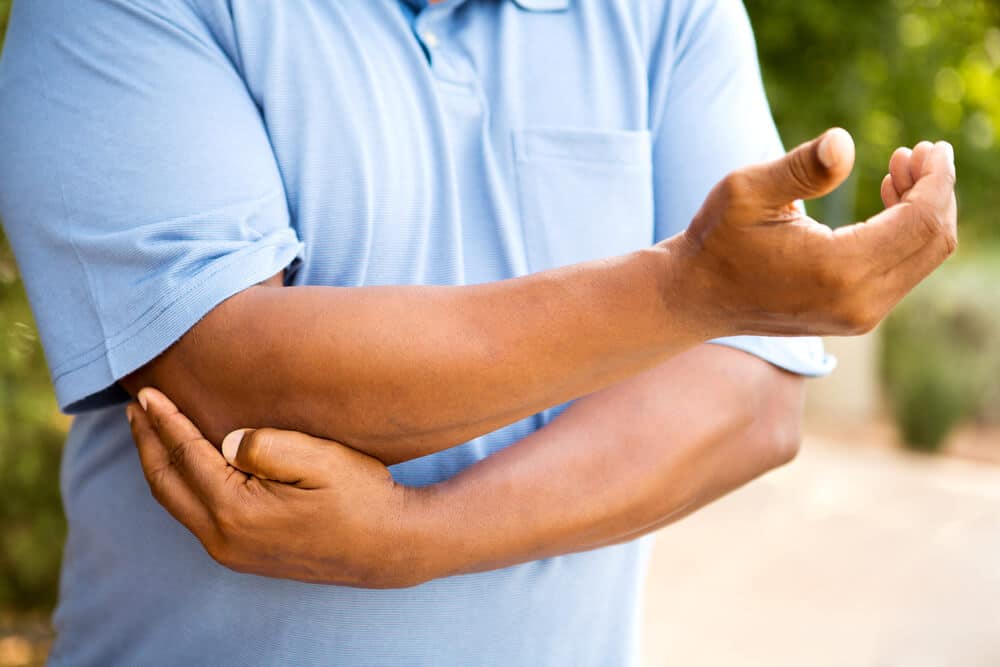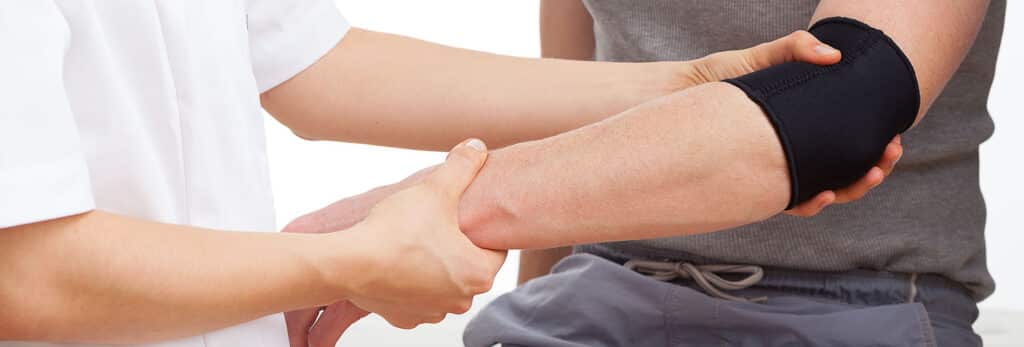This website uses cookies so that we can provide you with the best user experience possible. Cookie information is stored in your browser and performs functions such as recognising you when you return to our website and helping our team to understand which sections of the website you find most interesting and useful.

An elbow hyperextension injury occurs when the elbow joint is forcefully extended beyond its normal range of motion, causing damage to the ligaments, tendons, muscles, or bones surrounding the joint. This type of injury often occurs during activities such as sports, falls, or accidents where the arm is forcefully straightened beyond its limits. Here are some key points about elbow hyperextension injuries:

Causes: Elbow hyperextension injuries can result from various causes, including falls onto an outstretched hand, direct impact to the back of the elbow, sudden forceful exam extension or high-impact sports activities such as gymnastics, martial arts, or football.
Mechanism of Injury: During hyperextension, the elbow joint may be subjected to excessive stretching or tearing of the ligaments and other soft tissues that stabilize the joint. This can lead to sprains, strains, dislocations, or fractures of the bones comprising the elbow.
Symptoms: Include pain, swelling, tenderness, bruising, instability, limited range of motion, and difficulty bearing weight on the affected arm. In severe cases, there may be visible deformity or an audible popping or snapping sound at the time of injury.
Diagnosis: Elbow hyperextension injuries typically involve a physical examination, evaluation of medical history, and imaging studies such as X-rays, MRI, or CT scans to assess the extent of damage and rule out associated fractures or dislocations.
Treatment: Elbow hyperextension injuries depend on the severity and extent of the damage. Mild to moderate injuries may be managed conservatively with rest, ice, compression, elevation (RICE therapy), pain medication, and physical therapy to reduce inflammation, alleviate pain, and restore strength and flexibility to the joint. Severe injuries, such as ligament tears or fractures, may require immobilization with a splint or brace, surgical intervention to repair or reconstruct damaged structures, and rehabilitation to facilitate recovery and prevent recurrent injuries.
Prevention: To prevent elbow hyperextension injuries, it’s essential to warm up properly before engaging in physical activities, maintain proper technique and form during sports and exercise, use protective equipment such as elbow pads or braces, gradually increase the intensity and duration of training, and avoid overexertion or pushing through pain.
Recovery: Depending on the severity of the injury, factors such as age and overall health, and adherence to treatment and rehabilitation protocols. With appropriate care and rehabilitation, most patients can expect to regain function and return to their usual activities within a few weeks to months following an elbow hyperextension injury. However, it’s essential to follow the guidance of your medical treatment plan and avoid rushing back into activities before the joint has fully healed to prevent reinjury or chronic problems.
contact us at Fair Oaks Orthopedics. Our professional medical staff can help you simply by calling us today.

In most cases, surgery is not required for a hyperextended elbow unless there are severe associated injuries such as fractures, ligament tears, or significant joint instability.
For mild to moderate hyperextension injuries, treatment typically involves conservative measures such as:
Rest: Avoiding activities that exacerbate pain or strain on the elbow joint can help promote healing.
Ice: Applying ice packs to the affected area can help reduce swelling and inflammation, typically for 15-20 minutes several times a day.
Compression and Elevation: Wrapping the elbow with a compression bandage and keeping it elevated above the heart level can help reduce swelling and promote circulation.
Pain Management: Over-the-counter pain relievers such as acetaminophen or ibuprofen may be recommended to alleviate discomfort.
Physical Therapy: Rehabilitation exercises and stretches prescribed by a physical therapist can help restore the elbow joint’s strength, flexibility, and stability.
Immobilization: In some cases, wearing a splint or brace to limit elbow joint movement may be necessary to allow the injured tissues to heal.
However, if there are severe injuries such as fractures, ligament tears (such as a UCL tear), or significant joint instability, surgical intervention may be necessary. Surgery may involve repairing or reconstructing damaged structures, such as ligament reconstruction, internal fixation of fractures, or other procedures to stabilize the joint.
Make Your Appointment Today
Fair Oaks Ortho – Fairfax,VA


